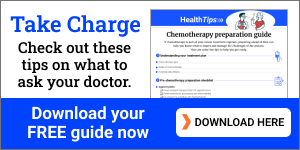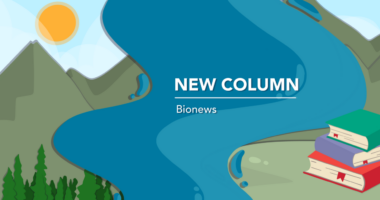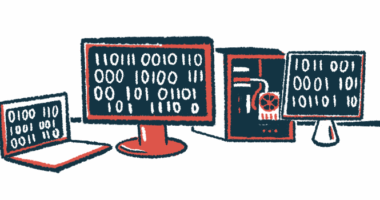Navigating a myeloma diagnosis in the land of ‘I don’t know’
A journalist faces her own tough questions when the tables are turned

I am a longtime journalist with a firm belief that knowledge is power. My life’s work has been to answer the who, what, where, when, why, and how.
But I always asked these questions in the context of things happening to other people. However, in the spring of 2019, I started asking them about myself. Specifically, why was I waking up with headaches every morning?
For more than a week, the headaches had been radiating from the back of my skull. The first few times it happened, I downed some Excedrin and headed off to work. But I knew I couldn’t keep doing that, so I made an appointment with my primary care doctor. He discovered that my blood pressure was through the roof, which was unusual for me, even though I work in a high-stress field. He prescribed a blood pressure medication and told me to come back in two weeks.
Two weeks later, my blood pressure remained high, and I was still waking up with headaches. My doctor ordered an array of tests that sounded like those mysterious initials on TV shows like “ER.” I soon discovered that “CBC” means “complete blood count,” and “CMP” is a comprehensive metabolic panel. These were two of the 11 tests marked “STAT” on the lab order to prompt same-day results.
When my doctor called that night, he couldn’t tell me exactly what was going on, but he did say that my results indicated a “malignancy.” The ambiguity nearly broke me.
Hearing the word “malignancy” with no further explanation was terrifying. The powerlessness I felt sent me into a fit of tears and a downward spiral of “what ifs.” Particularly, what if it was pancreatic cancer, which had killed my adoptive father 101 days after his diagnosis?
I had landed hard in a place I called “The Land of ‘I Don’t Know.’” It was filled with mystery and uncertainty.
Words I didn’t understand
I was immediately referred to an oncology specialist, but in my small city, it can take weeks to schedule an appointment. Thankfully, my doctor managed to get me one that week. My husband, Tony, took the day off work to go with me. That’s when we first heard the words “multiple myeloma.”
It was an answer to the what, but I didn’t understand it at first. I stared at the hematologist and asked him to repeat himself. “Multiple myeloma,” he patiently replied.
Answers often lead to more questions, which certainly was the case here. Like many newly diagnosed patients, I didn’t know those two words. Though more than a few members of my adoptive family had gotten cancer, this term seemed different. I didn’t quite realize it meant “cancer,” let alone what type of cancer.
I didn’t hear the next few things the doctor said. Too much was running through my brain. When the words “multiple myeloma” finally sank in, my first response wasn’t fear; it was relief because it wasn’t pancreatic cancer. I didn’t know what I was dealing with.
My kidneys were bad enough that the hematologist wanted to get me into treatment as quickly as possible, so minutes after he delivered the diagnosis, Tony drove me to the only hospital in our community that did chemotherapy. I didn’t pay attention to where we were going; I was too busy Googling. (I later learned that Google must be used with caution, but that’s a topic for another day.)
“Multiple myeloma is a cancer of plasma cells,” I learned from the American Cancer Society, which was my main resource in those early days. (I had yet to learn about organizations like the International Myeloma Foundation and the Multiple Myeloma Research Foundation, or sites like Rare Cancer News.) So I knew a little more of the what, even if I didn’t yet know when, where, why, or how.
To be honest, I still don’t know those last two. Nor do researchers.
But another thing I quickly learned was that multiple myeloma is treatable. That’s what I held on to as I called our son and then my brother, who said something that galvanized me.
“Knowing you, you’re going to wind up knowing more than your doctors about this thing,” he told me.
I’ll never rise to that standard! But for most of the past six years, I’ve tried to offer information, support, and hope to other patients through social media, primarily Facebook. We may have wandered into “The Land of ‘I Don’t Know,’” but we can still learn — and hope for the day when we get the answers we need to be cured.
Note: Rare Cancer News is strictly a news and information website about the disease. It does not provide medical advice, diagnosis, or treatment. This content is not intended to be a substitute for professional medical advice, diagnosis, or treatment. Always seek the advice of your physician or other qualified health provider with any questions you may have regarding a medical condition. Never disregard professional medical advice or delay in seeking it because of something you have read on this website. The opinions expressed in this column are not those of Rare Cancer News or its parent company, Bionews, and are intended to spark discussion about issues pertaining to rare cancer.







Andrew G.
Gina's story is a familiar one. I have had myeloma since 2013. I mentor and coach many other patients. What I tell those who are newly diagnosed is get control over your disease. This is accomplished by educating yourself, understanding your results and finding doctors who are experts in myeloma and who are willing to partner with you in fighting the cancer. You must play an active role in your treatment decisions which you can do only if you understand myeloma almost as well as your doctor. By getting control through education and self-advocacy you can relive your anxiety and put yourself in the best position to fight!
Caroline
Thank you for sharing your powerful story, Gina. Your journey through the "Land of I Don't Know" and your emphasis on finding hope through information really resonates. Your point about learning to offer support to others is so crucial.
I'm curious about integrating physical activity, like cycling, into life after a diagnosis. I recently came across a resource that seems to align with this mindset, https://mccycling.org/pedaling-through-myeloma-a-cyclists-handbook, which discusses adapting cycling routines and using RPE instead of hard metrics. For those who were active before their diagnosis, do you think this kind of adapted, mindful approach could be a valuable part of reclaiming a sense of normalcy and control during treatment?
Gina Diamante
Thank you!
I wasn't familiar with the initials "RPE," but I see they stand for "Rate of Perceived Exertion." https://my.clevelandclinic.org/health/articles/17450-rated-perceived-exertion-rpe-scale.
It seems logical to me that this would be helpful. I was not a particularly active person pre-cancer, nor am I now. But it's been very valuable to me to return to the things I once loved doing, knowing that I need to moderate certain things and be more deliberate about a few things.